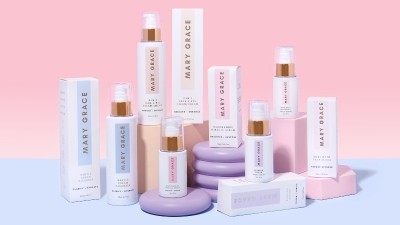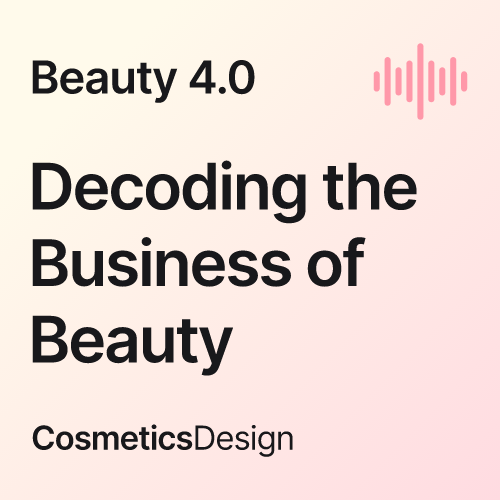Acne-buster: Collagen application can enhance the anti-acne effects of red and blue light irradiation
![Alternating red and blue light irradiation combined with collagen dressing can improve the treatment efficacy of acne vulgaris, says new study. [Getty Images]](/var/wrbm_gb_food_pharma/storage/images/_aliases/wrbm_large/publications/cosmetics/cosmeticsdesign-asia.com/article/2023/01/11/collagen-application-can-enhance-the-anti-acne-effects-of-red-and-blue-light-irradiation/16072790-1-eng-GB/Collagen-application-can-enhance-the-anti-acne-effects-of-red-and-blue-light-irradiation.jpg)
According to the paper, the incidence of acne in the Chinese population is above 80%. However, researchers noted that the efficacy of some treatment methods lacks the evidence to support their claims.
The study noted the emergence of lasers and light devices as acne treatments, highlighting that red and blue light irradiation treatment has been found repair inflammatory acne and even relieve sunburn with good efficacy.
However, the issue is that it has been known to cause different degrees of skin burning, dryness, flushing and other adverse symptoms.
The team hypothesised that the addition of collagen dressing could mitigate the above effects. Known most for its anti-ageing functions, collagen can also promote skin tissue metabolism, as well as accelerate skin tissue regeneration and repair.
To test the combination of treating acne with alternating red and blue light treatment and collagen dressing, the researchers recruited 105 patients with acne vulgaris treated in Baoji Hospital of Traditional Chinese Medicine from January 2019 to February 2020.
According to the study, subjects were comparable due to insignificant differences observed regarding gender, age, course of disease, acne severity, education level, monthly income, smoking history, and alcoholism history.
The control group of 50 patients received conventional red and blue light treatment, while the other 55 patients were treated with additional collagen dressing, made of collagen stock solution and non-woven fabric.
The scores of inflammatory skin lesions, facial seborrhoea scores, stratum corneum water content and transepidermal water loss (TEWL) were compared before and after the treatment. A year’s worth of outpatient records were also reviewed.
Results
The study found that red and blue light irradiation promotes the synthesis of adenosine triphosphate (ATP) through actinic action, increases cell metabolism, promotes cell proliferation, accelerates the release of growth factors, improves local blood circulation, and promotes local repair of fibroblasts.
Thereby it concluded that red and blue light treatment promoted wound healing “to a certain extent”, the study said.
The collagen dressing, on the other hand, could promote cell differentiation, movement, chemotaxis and repair of connective tissue, and improve the speed of epidermal regeneration.
Comparing the clinical efficacy of two groups after treatment, it was found that the research group held an evidently higher total rate of clinical efficacy.
After treatment, the incidence of adverse reactions, the scores of inflammatory skin lesions, and facial seborrhoea and TEWL in the research group after treatment were all lower than those in the control group.
Furthermore, the water content of the stratum corneum was comparatively higher.
By querying the outpatient records and electronic medical records, 17 patients were confirmed to have had recurrence of acne – 10 patients in the control group and seven patients in the research group.
The study noted that there was no statistical difference was observed between the two groups.
The researchers concluded: “In this study, it was confirmed that alternating red and blue light irradiation combined with collagen effectively improved the treatment efficacy in patients with acne vulgaris, as well as the changes of skin physiological indicators and symptom scores and reduced the incidence of adverse events.”
American Journal of Translational Research
Chan Zhao et al.
![Babywell Check is a skin barrier test for infants based Kao's RNA testing technology. [Kao]](/var/wrbm_gb_food_pharma/storage/images/_aliases/wrbm_medium/publications/cosmetics/cosmeticsdesign-asia.com/headlines/brand-innovation/kao-applies-rna-monitoring-tech-to-non-invasive-baby-skin-care-testing-kit/16216333-1-eng-GB/Kao-applies-RNA-monitoring-tech-to-non-invasive-baby-skin-care-testing-kit.png)
![[Getty Images]](/var/wrbm_gb_food_pharma/storage/images/_aliases/wrbm_medium/publications/cosmetics/cosmeticsdesign-asia.com/headlines/brand-innovation/acne-care-australian-professor-calls-out-companies-for-pushing-false-promises-to-consumers/16093514-1-eng-GB/Acne-care-Australian-professor-calls-out-companies-for-pushing-false-promises-to-consumers.jpg)
![Yak collagen has been found to be an effective remedy for sunburns. [Getty Images]](/var/wrbm_gb_food_pharma/storage/images/_aliases/wrbm_medium/publications/cosmetics/cosmeticsdesign-asia.com/headlines/formulation-science/yak-collagen-shows-promise-in-accelerating-healing-process-of-sunburns-chinese-study/16076405-1-eng-GB/Yak-collagen-shows-promise-in-accelerating-healing-process-of-sunburns-Chinese-study.jpg)






![Indus Valley is working to corner 30% of India's online premium boxed hair colour market. [Indus Valley]](/var/wrbm_gb_food_pharma/storage/images/_aliases/wrbm_tiny/publications/cosmetics/cosmeticsdesign-asia.com/article/2024/07/26/indus-valley-aims-to-secure-30-of-india-s-online-premium-hair-colour-market-with-organic-offerings/17594932-5-eng-GB/Indus-Valley-aims-to-secure-30-of-India-s-online-premium-hair-colour-market-with-organic-offerings.jpg)
![[Getty Images]](/var/wrbm_gb_food_pharma/storage/images/_aliases/wrbm_tiny/publications/cosmetics/cosmeticsdesign-asia.com/china/china-focus-latest-developments-in-china-s-booming-beauty-market25/17606695-1-eng-GB/China-focus-Latest-developments-in-China-s-booming-beauty-market.jpg)
![Kosé has launched makeup brand Visée in Singapore as part of plans to reinforce its position in SEA. [Visée]](/var/wrbm_gb_food_pharma/storage/images/_aliases/wrbm_tiny/publications/cosmetics/cosmeticsdesign-asia.com/headlines/business-financial/visee-singapore-kose-aims-to-enhance-brand-visibility-in-sea-with-new-launch/17587264-1-eng-GB/Visee-Singapore-Kose-aims-to-enhance-brand-visibility-in-SEA-with-new-launch.jpg)
![ble C&C is set on reinforcing its competitiveness in China’s beauty market. [Missha]](/var/wrbm_gb_food_pharma/storage/images/_aliases/wrbm_tiny/publications/cosmetics/cosmeticsdesign-asia.com/headlines/business-financial/able-c-c-aims-to-strengthen-competitiveness-in-china-through-online-expansion-kol-collabs/17591626-1-eng-GB/Able-C-C-aims-to-strengthen-competitiveness-in-China-through-online-expansion-KOL-collabs.jpg)

![LG H&H genetic study says 23 genetic regions affect natural skin tone. [Getty Images]](/var/wrbm_gb_food_pharma/storage/images/_aliases/wrbm_tiny/publications/cosmetics/cosmeticsdesign-asia.com/article/2024/07/23/lg-h-h-discovery-of-genetic-skin-tone-factors-in-east-asians-potentially-key-to-skin-radiance-developments/17587210-1-eng-GB/LG-H-H-discovery-of-genetic-skin-tone-factors-in-East-Asians-potentially-key-to-skin-radiance-developments.jpg)

![DR.CI:LABO expects brand-supplier partnerships gain more public prominence as consumers interest in skin care grows online. [Dr.Ci:Labo]](/var/wrbm_gb_food_pharma/storage/images/_aliases/wrbm_tiny/publications/cosmetics/cosmeticsdesign-asia.com/article/2024/07/22/brand-supplier-partnerships-will-come-to-the-fore-amid-the-online-skin-care-landscape-dr.ci-labo/17576755-1-eng-GB/Brand-supplier-partnerships-will-come-to-the-fore-amid-the-online-skin-care-landscape-DR.CI-LABO.png)


